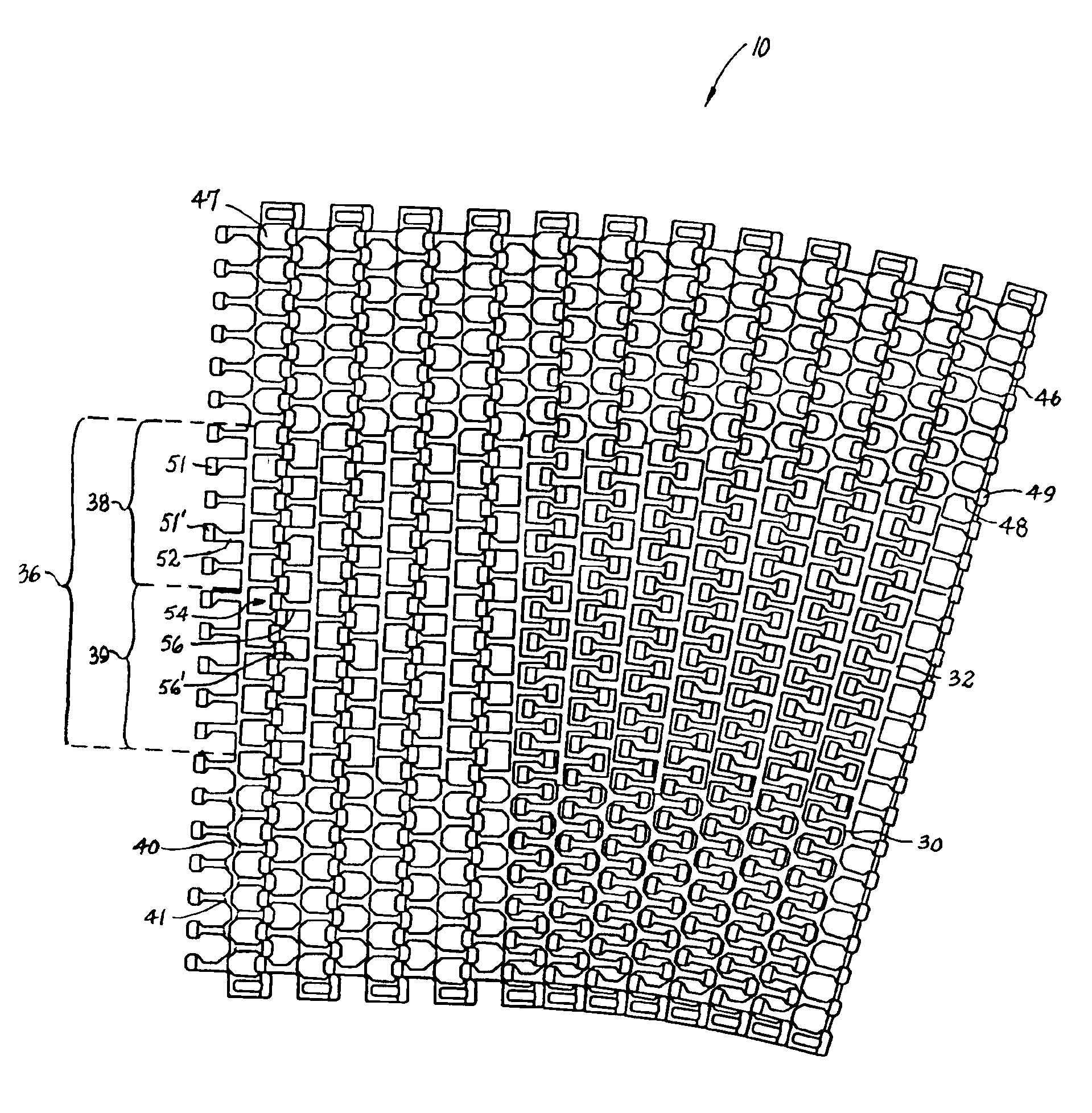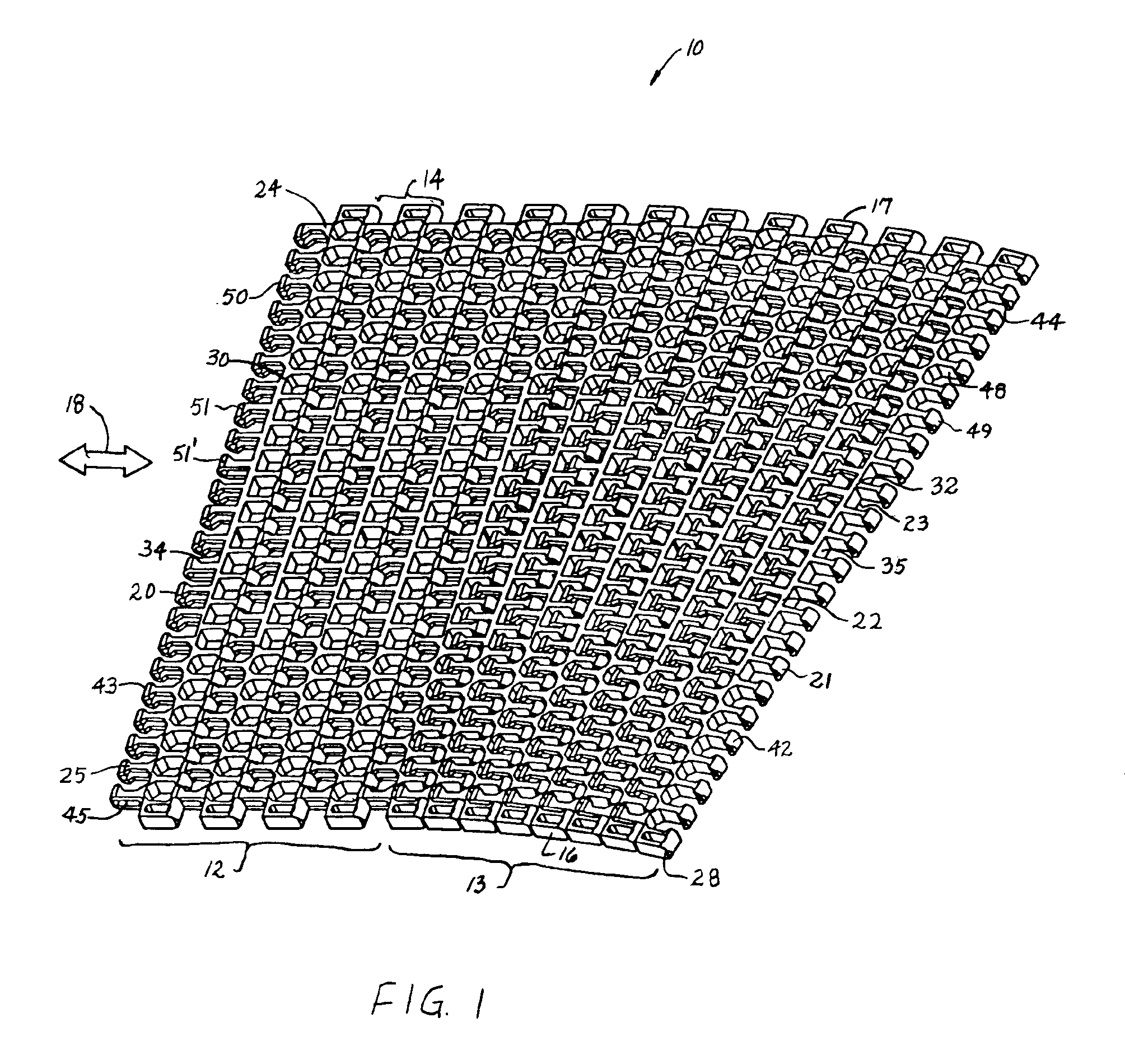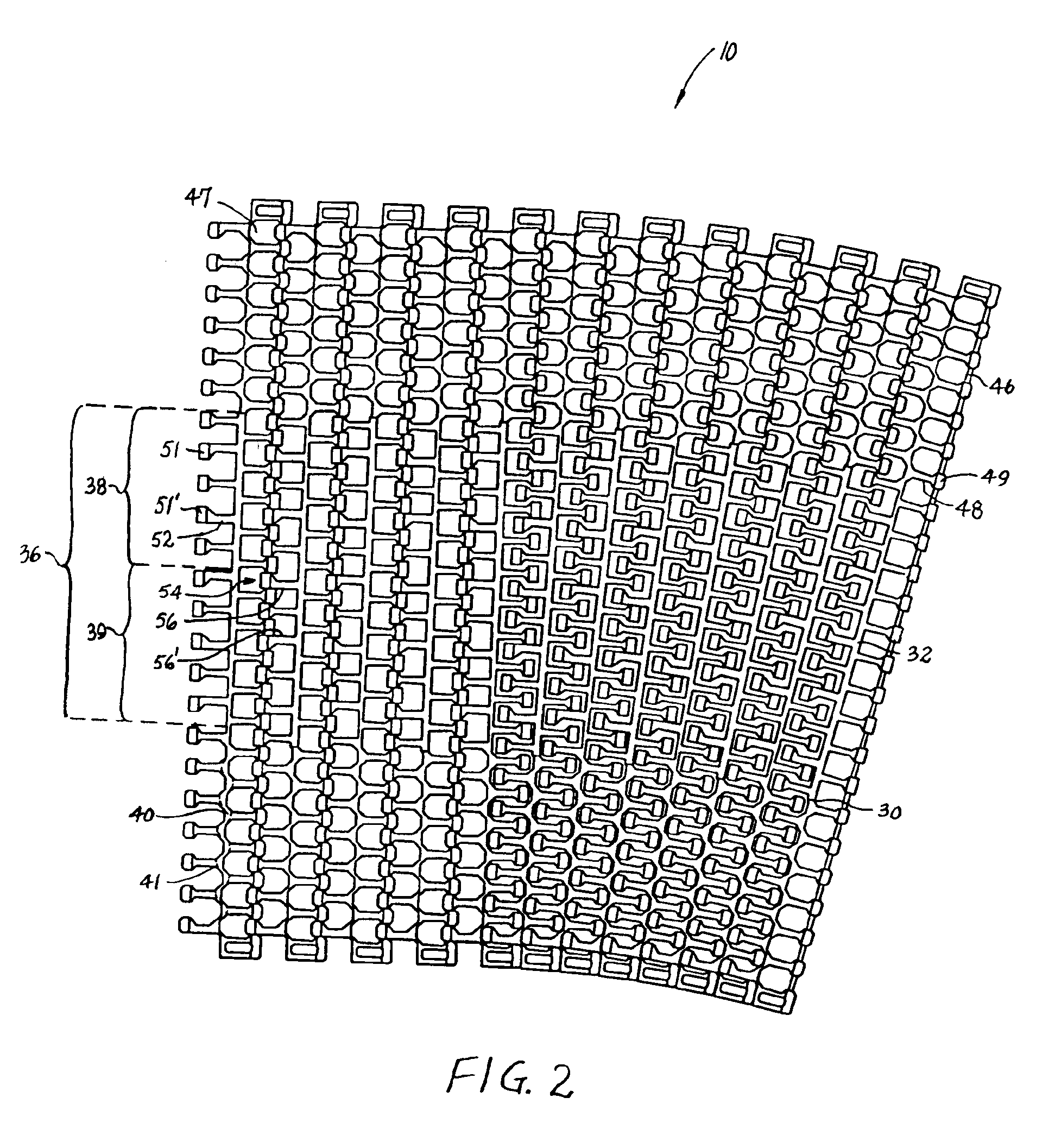Modular plastic conveyor belt with high beam strength
a conveyor belt and module technology, applied in the direction of conveyors, packaging, transportation and packaging, etc., can solve the problems of black specks or worn-off metal bits falling on the conveyed articles, not being able to accept black specks, and not having a lot of beam strength
- Summary
- Abstract
- Description
- Claims
- Application Information
AI Technical Summary
Benefits of technology
Problems solved by technology
Method used
Image
Examples
Embodiment Construction
A portion of a modular plastic conveyor belt embodying features of the invention is shown in FIGS. 1 and 2. The conveyor belt 10 is shown in FIG. 1 following a conveying path that includes straight 12 and curved 13 segments. The belt consists of a series of rows 14 of belt modules. Each row extends laterally in width from a first side edge 16 to a second side edge 17 and in the direction of belt travel 18, which may be bi-directional, from a leading end 20 to a trailing end 21. The modules extend in depth from a top side 22, on which articles are conveyed, to a bottom side 23. (The descriptors “leading” and “trailing” and “top” and “bottom” are not meant to limit the belt to a certain direction of travel or a certain orientation, but merely to help describe the general spatial relationship of various components of the example versions described.) Each row is made up of a number of belt modules arranged side by side. In this example, a row includes a first side edge module 24 and a s...
PUM
 Login to View More
Login to View More Abstract
Description
Claims
Application Information
 Login to View More
Login to View More - R&D
- Intellectual Property
- Life Sciences
- Materials
- Tech Scout
- Unparalleled Data Quality
- Higher Quality Content
- 60% Fewer Hallucinations
Browse by: Latest US Patents, China's latest patents, Technical Efficacy Thesaurus, Application Domain, Technology Topic, Popular Technical Reports.
© 2025 PatSnap. All rights reserved.Legal|Privacy policy|Modern Slavery Act Transparency Statement|Sitemap|About US| Contact US: help@patsnap.com



